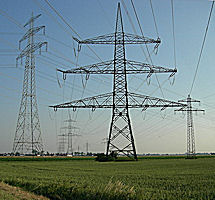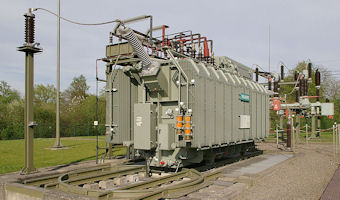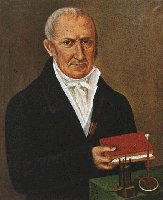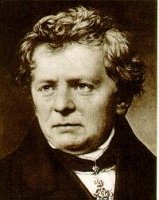

World primary energy consumption in 2023 was 620 EJ. (Units EJ and PWh and their transformations are explained on page Units of Energy.) In the same year, power plants world-wide send out 108 EJ, or about 30 PWh, to consumers, see Statistical Review of World Energy. Thus, approximately one sixth of primary energy comes from the electrical outlet. However, this is mostly via industry and service providers, not direct home use. If we consider the energy consumption per capita per day, a US citizen in 2023 would consume 211 kWh of primary energy and 36 kWh of electrical energy.


Between the power plant and the outlet in your home are transmission lines and transformers; for example, a voltage of 10 kV at the producer is transformed up to about 750 kV for the transmission, which which ends up 120 V for consumers in U.S. or 230 V in Europe.
The voltage, U, is measured in volts [V], the resistance, R, is measured in ohms [Ω], and the current, I, is measured in amperes [A]. The names of the units honor three scientists:



Ohm’s law is the most important law in electricity:

The electrical power, designated by P, is measured in watts [W]. It is the product of voltage and current:

The formula for power loss is derived using Ohm’s law:

The transmitted electric power should be large compared to the power loss due to the electrical resistance of the power line. The loss is proportional to the squared current, but does not depend on the voltage, whereas the transmitted power is the product of voltage and current. One can see that the transfer of electrical power should be done with the highest possible voltages. Up to 765 kV are used in the United States.
An aluminum cable steel reinforced is the most common overhead power line conductor in use for transmission today. Aluminum is cheaper and has about half the weight of a comparable resistance copper cable. It has a diameter of less than 10 cm and a steel core for stability. Heating of the conductor by electrical resistance causes the majority of the power loss.
The cable and its environment make up a capacitor. Capacity is smaller for an overhead power cable, because the distance between the cable and the ground is large. Capacity is larger for an underground or underwater cable, because the cable to earth distance is very small. The alternating current (AC) has a frequency of 60 Hz in the United States. The alternation causes capacitive losses, smaller for an overhead power cable and larger for a buried cable. This loss can be circumvented by direct current (DC) power lines. But expensive AC-DC transformation facilities on the two AC-DC transitions are required. The cost of conversion equipment is less than the cost of the power loss for underwater cables longer than 10 km or overhead cables longer than 1000 km. In addition, a high-voltage DC line allows power transmission between several unsynchronized AC transmission systems, which exist in the United States. The continental Europe has only one synchronized AC transmission system with a frequency of 50 Hz and uses high-voltage DC lines to connect neighbors and the offshore wind power.